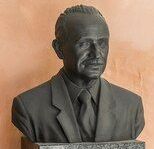Littleton Radon Mitigation
Discovering Radon
Johannes Radon was a brilliant mathematician and physicist who made significant contributions to the fields of mathematics, physics, and engineering. Born on December 16, 1887, in Dornach, Austria, Johannes was the son of a school principal and grew up in an academic environment.
He studied at the University of Vienna, where he earned his doctorate in mathematics in 1910. After completing his doctorate, Johannes went on to work as a lecturer and researcher at various universities in Austria and Germany, where he became known for his groundbreaking work in the field of mathematics.
In 1908, while working on his doctoral thesis, Johannes discovered a new mathematical concept that became known as the Radon transform. This concept laid the foundation for understanding the behavior of X-rays, which later led to the development of X-ray computed tomography (CT) scanners. Johannes' work was considered groundbreaking, and it has since become an essential tool in many fields, including medical imaging, geophysics, and computer vision.
In 1917, Johannes became a professor of mathematics at the University of Vienna, where he continued to make significant contributions to mathematics and physics. In 1923, he was honored when the newly discovered noble gas with atomic number 86 was named Radon in his honor.


Johannes' legacy extends far beyond the periodic table of elements, however. His work has had a profound impact on many fields, including medical imaging. X-ray CT scanners, which use the Radon transform, have revolutionized medical imaging, allowing doctors to see inside the body in ways that were previously impossible.
Johannes' work has also been influential in the field of geophysics, where it has been used to study the Earth's interior. Additionally, his contributions to computer vision have been essential in the development of artificial intelligence and machine learning.
Johannes was a remarkable mathematician and physicist who made significant contributions to the fields of mathematics, physics, and engineering. His discovery and his work on the behavior of X-rays have had a profound impact on many fields, including medical imaging, geophysics, and computer vision. Johannes's legacy lives on today, not only in the periodic table of elements but also in the countless ways his work has influenced modern science and technology.
We Know Radon
Let's Connect!
Are you concerned about the levels of dangerous gas in your home? Well, worry no more! Littleton Radon Mitigation is at your service to conduct testing and install mitigation systems to keep you and your loved ones safe. Our team of experts is equipped with the latest technology and techniques to ensure that your gas levels are under control. Moreover, we also offer repair and maintenance services for your existing system. Don't wait until it's too late, give us a call today, and let's keep your home healthy and safe.
QUICK LINKS
COMPANY INFO
Littleton, CO 80120, United States of America



